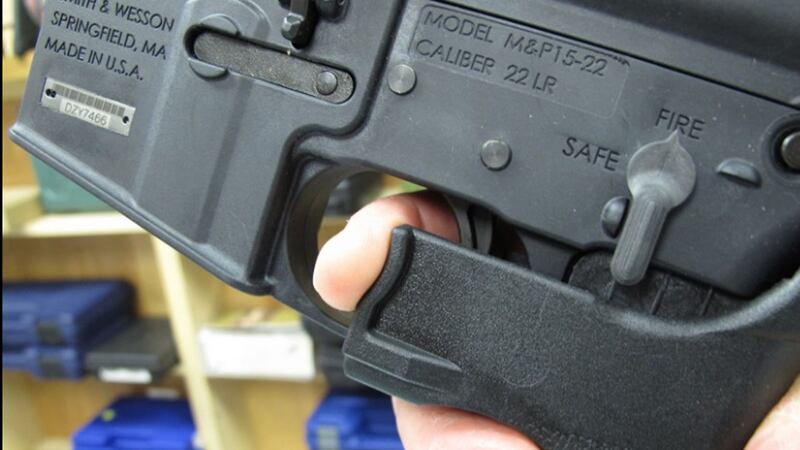According to law enforcement authorities Monday, the man who killed 59 concertgoers had a dozen devices that could have converted semi-automatic firearms into weapons that are fully automatic.
Police told The Associated Press they found 12 bump stocks when they searched the room of shooter Stephen Paddock. They said they are not sure Paddock used the devices in the attack on people at the Highway 91 Harvest country music festival Sunday. Paddock fired at an area some 400 yards away from his hotel room in the Mandalay Bay Hotel located on the Las Vegas Strip.
What is a bump stock and how does it work? Here’s a look at the device.
What is a bump stock?
A bump stock replaces the weapon’s gunstock (the part of a rifle to which the barrel and firing mechanism are attached). The bump stock has a "support step" that covers the trigger opening.
>> Read the latest on the Las Vegas shootings
How does it work?
The bump stock works when the shooter holds the pistol grip with one hand and the barrel of the gun with the other. The support step holds a person’s finger in place when the gun is fired.
A spring mechanism in a bump stock causes the rifle to bounce forward with every shot. The recoil of the gun pushes it back “bumping” the shooter’s finger causing it to continuously push on the trigger, potentially allowing the weapon to fire in a rapid sequence.
Is it legal to own?
The Federal Bureau of Alcohol, Tobacco, Firearms, and Explosives have sent letters to two manufacturers of bump stocks, according to an article in Popular Mechanics, saying the device is legal partly because they "[perform] no automatic function when installed."
While the device can make a weapon fire many rounds in a short period of time, it does not technically make a rifle an automatic weapon. To be an automatic weapon, a rifle must be able to fire continuously by having the shooter press the trigger once.
With bump stocks, a shooter’s finger actually bumps against the trigger to fire the weapon.
How hard is it to get an automatic weapon?
Semi-automatic weapons are relatively easy to purchase. However, the only automatic weapons legal to purchase for civilians in the United States are the ones that have been registered between 1934 and 1986. According to the Bureau of Alcohol, Tobacco, Firearms, and Explosives, an automatic weapon is considered a machine gun. No new machine guns can be made or sold to civilians. Automatic weapons have been heavily regulated since the National Firearms Act of 1934.
Taking possession of such weapons requires paying a $200 federal transfer tax, filling out an application to register the weapon, submitting passport photos, getting your chief law enforcement official to sign your application, and submitting to an FBI background and fingerprint check. Those weapons are hard to come by and generally pretty expensive. You do not want to violate the Firearms Act. If you do, expect to sit in prison for 10 years as you figure out how to pay the $100,000 fine.
A semi-automatic weapon can be converted into an automatic weapon with some devices, or by altering the gun in certain ways. It is illegal to make the gun into an automatic weapon.
Paddock had 23 guns with him at the hotel, along with 12 bump stock devices according to the Associated Press.
The Associated Press contributed to this story.
Sources: The NRA; smartgunlaws.org; The FBI; The Wall Street Journal; assaultweapons.info; Wired; Popular Mechanics
Cox Media Group








